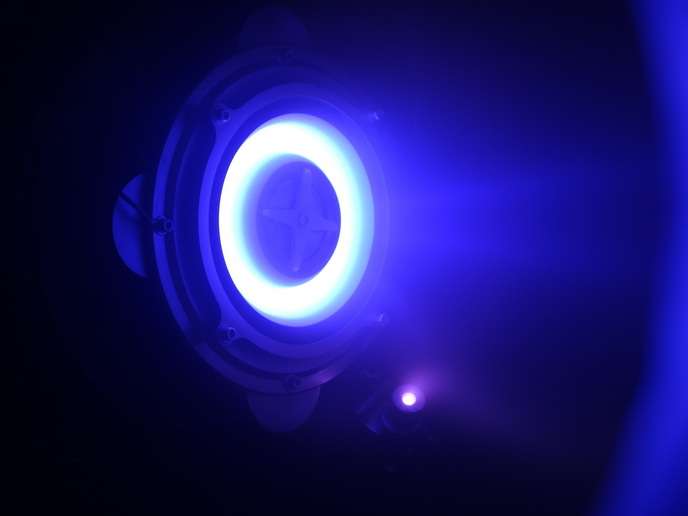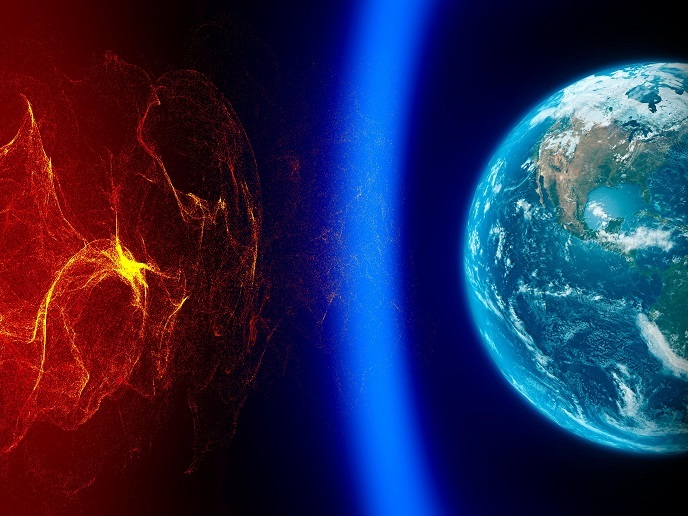Medium-power electric thrusters reach new heights
To keep pace with the evolving demands of next-generation large satellite deployments, Europe is committed to providing its space industry with a highly competitive and reliable propulsive solution. The EU-funded CHEOPS MEDIUM POWER(opens in new window) project focuses on the development of a medium-power electric propulsion system (EPS) leveraging Hall-effect thruster technology, which is poised to revolutionise how spacecraft are propelled.
Elevating performance standards
Spearheaded by Safran Spacecraft Propulsion(opens in new window), the consortium aims to achieve a technology readiness level (TRL) of 6/7 for a medium-power dual-mode EPS. “Our activities involve perfecting the system to operate efficiently in both the high-thrust mode for orbit raising and high-impulse mode for station keeping, while also ensuring low fuel consumption and compatibility with both xenon and krypton propellants,” notes project coordinator Vanessa Vial. Project partners also aim to reduce the total EPS costs by 30 % for satellites in geostationary Earth orbit and navigation configurations. Drawing on extensive experience, they focus on design-to-cost optimisation approaches, streamlining production processes and enhancing system/subsystem functionalities. Lastly, the project seeks to enhance diagnostic approaches for ground testing and potential in-space applications, aiming to better understand the effects of terrestrial conditions on system performance.
System improvements
To achieve its objectives, project partners focus on incremental developments at system and subsystem levels. “This should enhance the maturity of certain key components, namely the thruster unit, power processing unit and the fluid management system, elevating them to TRL6/7 by 2024,” states Vial. Efforts to optimise the power processing unit include streamlining its functions and selecting cheaper yet equally reliable components. The fluid management system will incorporate commercial-off-the-shelf products that qualify for space, ensuring it can support a variable number of thrusters per satellite. Furthermore, the thruster unit will cover various missions in the target market segment, significantly reducing the need for new product development with each mission.
Project activities
The project began by designing flexible equipment that could adapt not just to the reference architecture but to various missions. This involved a detailed reliability analysis as well as calculating the balance between power requirements, power-to-thrust ratios and the performance trade-offs necessary for optimising both orbit raising and station keeping. The second phase shifted focus towards refining the technical specifications of the medium-power EPS, incorporating feedback from large system integrators to enhance both orbit-raising and station-keeping capabilities. Parallel developments in non-intrusive diagnostics offered insight into thruster performance and internal dynamics, revealing complex oscillations and rotating spokes under specific conditions. The development of the Club Design software and the EP2PLUS-2 code facilitated value cost analysis and accurate plasma plume simulations, respectively.
Hitting new milestones in medium-power electric thrusters
Building on the successes of its initial phase, CHEOPS MEDIUM POWER aims to make the European space industry more competitive. “Our ambition is to introduce worldwide an EPS that offers high thrust and high specific impulse, while also boasting an extended lifecycle. This innovative EPS design should cater to both traditional markets – telecommunications and navigation – and emerging sectors,” explains Vial. CHEOPS MEDIUM POWER also addresses future market demands, seeking to cut both non-recurring and recurring costs across design, manufacturing, testing, qualification and delivery times. “We seek to streamline production processes to achieve shorter fabrication cycles, improved quality, leaner manufacturing, faster assembly lead times and enhanced tolerance management. Ultimately, we aspire to fundamentally transform design and manufacturing practices in the long term, thereby increasing valuable payload and generated revenues,” concludes Vial.







